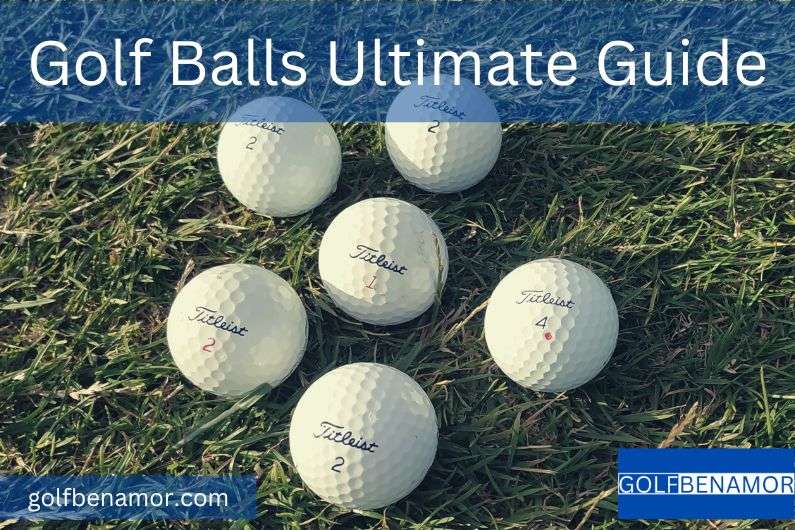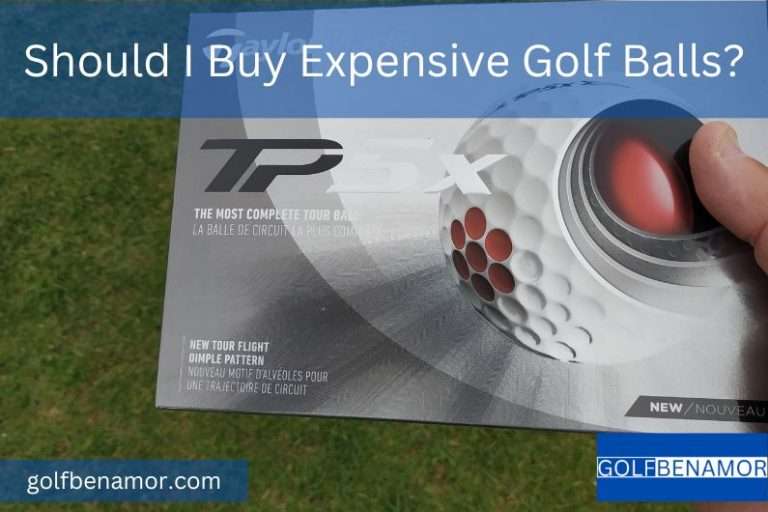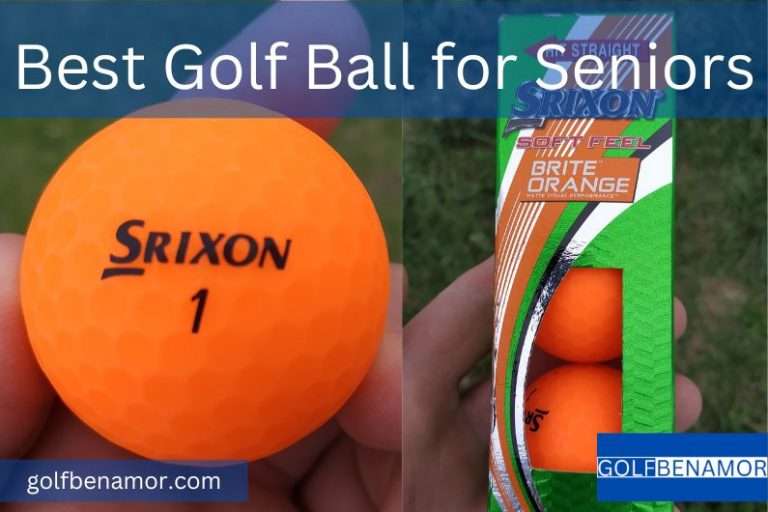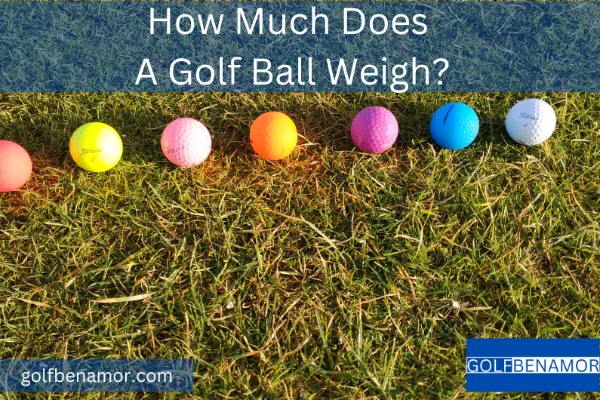Golf Balls Ultimate Guide
You might think all golf balls are the same but there are quite significant differences between the different types of golf ball on the market. So, before you buy those bargain basement balls from Costco or Walmart have a read of this Golf Balls Ultimate Guide so you will be able to decide what sort of golf ball is right for you in 2022.
Conforming Golf Balls
The administrators of the game of golf have laid down lots of rules both on how to play the game and the equipment that you should use. If you want to play in organized competitions or get an official handicap then you need to stick to equipment that abides by the rules laid down by the R&A (Royal and Ancient Golf Club of St Andrews) and the USGA (United States Golf Association).
There are five significant rules governing the performance of golf balls. Manufacturers looking for mass-market appeal will send their balls for testing. If they meet the requirements then they are added to the list of conforming golf balls.
In order to get on the list a golf ball must be at least 1.68 inches (42.67 mm) in diameter. It cannot weigh more than 1.62 ounces (45.93 g). The dimple pattern on the cover of the ball must be symmetrical in nature. The initial velocity of the ball cannot be more than 250ft/s and the overall distance under testing conditions shouldn’t be more than 317 yards.
The ball speed and distance figures are based on it being struct at a particular speed. Obviously, longer hitters can achieve greater distance due to greater clubhead speed or conditions during play such as a strong tailwind or firm fairway.
Many would argue that golf ball technology has advanced too far and golf ball construction needs to change to reduce distance. It’s certainly true that the modern professional can make a golf ball fly further, you only need to look at the driving distance stats for the last 20 years or so.
How Golf Balls Are Constructed
Modern balls are of solid construction. They will have a core and potentially several layers of material along with a thin cover.
The different layers are usually made of various synthetic rubbers which are designed with different performance characteristics in mind. Ideally, you want low spin with the driver but higher levels of spin with irons. By using different materials you can tailor the way the ball will perform for different types of players.
How Many Layers Do Golf Balls Have
Balls that use either two or three layers are the most common although you can find balls on sale with anything from one to five layers.
One-Piece Golf Balls
Not the sort of ball you would probably want to use on a golf course. These tend to be the preserve of mini or crazy golf courses and some cheaper driving ranges. It’s likely these balls will feel far off the club when you strike them.
Two-Piece Golf Balls
In the past, two-piece golf balls would usually have been considered budget golf balls for beginners or high handicappers. Often they would have been called distance balls.
It is likely they would have felt quite firm as well off the golf club. They wouldn’t have provided as much spin as the more expensive three-piece balls of the day.
While it’s still true that most three-piece balls will tend to spin more than most two-piece balls you’ll find plenty of soft feel golf balls in this category now.
The golfing public seems to prefer a soft-feeling ball and the golf ball manufacturers have obliged by offering many models that feel soft even in the budget category.
Three-Piece Golf Balls
As the number of layers increases so does the complexity of manufacture. So three, four and five-piece golf balls will cost more than a two-piece.
I suppose the cynic in me would also suggest that people buying “better” golf balls will be prepared to pay more.
Titleist is the pre-eminent golf ball company and the Pro V1 is their flagship model. It features three layers and a urethane cover. This type of cover material helps to produce high-spin golf balls. The most expensive balls used to have a balata cover but urethane makes for a much more durable golf ball.
More complicated balls try to offer the best of both worlds in terms of distance and spin. Premium balls offer more control while still allowing the golfer to hit the ball a long way.
Four-Piece Golf Balls
Four-piece golf balls are fairly rare probably because they will be more difficult to produce while maintaining quality standards. The Titleist Pro V1x is probably the most well-known in this category.
Five-Piece Golf Balls
The TP5 and TP5x by TaylorMade are the only balls currently in production with 5-layer construction.
Why Are There Numbers On A Golf Ball?
The large number printed under the manufacturer’s name is there for identification purposes. Other numbers might be because of the model name or the number of dimples.
What Do Golf Ball Dimples Do?
Dimples on a golf ball are designed to improve the aerodynamics of the ball. Without dimples, it would probably only travel around half as far. The direction of travel would also be somewhat random.
What Is Golf Ball Compression?
When referring to golf balls, compression is a measure of how easy or hard it is to change the shape of the ball at impact. Generally speaking, a low compression ball will feel soft while a high compression ball will feel firm.
In the past golf balls were often labeled with their compression rating although in reality the balls coming out of the factory went always that consistent. A ball with a compression rating of 100 would probably be used by a tour player while a 90 compression might be used by a reasonable club golfer.
Few manufacturers tend to publicize the compression ratings of their golf balls now. Manufacturers will often try to sell their product based on the fact that it feels soft and you can find certain balls with compressions as low as 30.
How To Choose The Right Ball For You: Golf Ball Buying Guide
The best way to find the perfect golf ball for your game is to try them out yourself.
Decide which aspects are going to be most important to you by asking yourself these questions:
- Do I want maximum distance?
- Do I want maximum spin?
- What should the ball feel like?
- What can I afford?
- Do I need a higher or lower launch?
Depending on the answers to those questions you should be able to come up with a shortlist of three or four different ball models for you to test out. If you’re most concerned about maximizing spin and then you will need to look at premium golf ball models such as those used on professional tours.
Start off around the green. Do you like the feel when chipping and pitching and do they give you enough spin? Do you like the feel with your putter?
Then you should move on to your longer clubs to check whether the type of ball you’ve picked gives you the sort of distances you expect and also a trajectory that you like.
Only then move on to your driver to check that you are getting the right sort of ball flight and distance off the tee.
Think about these criteria when you buy golf balls.
Feel
If you don’t like the feel of the ball when striking it then it’s going to be difficult to play your best golf. Lower compression balls tend to feel softer for slower swingers but you can also lose out on distance because lower compression balls often lose out in the distance stakes to firmer ones.
Spin
Spin should be one of the most important factors when selecting a ball to play with. It’s no good going for a high-spin premium ball if you tend to curve the ball a lot already as that will exacerbate the problem. Someone that is hooking and slicing their way around might be better off with a lower spin ball to reduce the curvature of their shots.
You also need to get the right amount of spin off the tee to get the maximum distance from your driver. Most amateurs tend to generate too much spin so a premium ball might not be a great idea for that reason.
Cost
In an ideal world, we would buy the best golf equipment on the market but we don’t live in an ideal world and most people to consider the cost of their hobby.
In reality, anyone with a handicap over 18 is not likely to see much benefit from playing with the most expensive balls. Add-on that they are likely to lose plenty of balls as well and it can get quite expensive quite quickly.
Ball Flight
It’s possible to find a golf ball that can help improve your ball flight. If you currently hit the ball too high or too low then it is possible to find a model to reduce those tendencies.
More Distance
While improving the distance you hit the ball can often lead to lower scores choosing the ball based primarily on how you can hit it is not necessarily the best way to shop.
I would contend picking a ball with the right feel and spin characteristics you do your game more good.
Compression Rating
A lot of manufacturers don’t really advertise their compression ratings anyway. Picking a ball because it is a specific compression is definitely a mistake. Try to find a ball that feels good to you and don’t worry about the compression.
Golf Balls Ultimate Guide: Conclusion
Finding the right golf ball for you should be a relatively painless process. Follow the methodology in this article to come up with a shortlist and then test them out till you find the ball that performed the best in the majority of categories.
Frequently Asked Questions [FAQ]
Who Makes The Best Golf Balls?
Titleist are the market leader and the other major ball manufacturers are Srixon, Bridgestone, Callaway and TaylorMade.
There have been many new ball manufacturers spring up over recent years offering their balls direct to consumer (DTC). These new brands include Snell Golf, Cut Golf, Seed Golf, Sugar Golf and Vice Golf.








